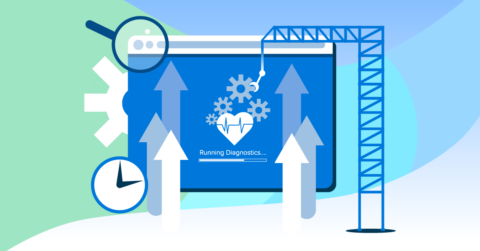
Lúgh Studio’s Ultimate Guide to Building an Audience
02/01/22
Digital Marketing
Building an audience is something most organizations (both nonprofit and for-profit) can benefit from. It brings results quicker and makes it easier to drive donations or sell products.
But how do you build an active and engaged audience? What are the strategies you should focus on above everything else, and how do you insure an active and valuable audience over time?
Today that’s what we are talking about: strategies to make your audience building more successful, as well as principles to keep in mind throughout the process. We will also provide you some tools that are useful for some of the most important strategies.
Click Here For Your PDF Version Of This Post
Let’s get started!
Why Building An Audience Is So Important
Three Principles Of Audience Building
Strategies For Building A Bigger And More Engaged Audience
…
Why Building An Audience Is So Important
We first need to understand why audience building is worth your time and effort. Only after we answer this question will the rest of our guide make sense.
While there are numerous benefits to building an audience, it all comes down to one word: leverage. Leverage is the ability to get greater results with fewer efforts, and this is exactly what an audience is able to provide you.
With an audience you know that your message is being seen by people who are interested in what you have to offer. While this has the potential to make you more profitable in the long run, there are numerous benefits related to leverage that building an audience can bring.
- More successful fundraising campaigns
- An increased number of professional opportunities for collaboration with other brands and organizations
- Higher engagement rates with your content
- A quicker feedback loop on the effectiveness of your organization’s activities
These are just some of the benefits you can expect when you start taking audience building seriously.
Three Principles Of Building An Audience
Let’s dive into some main principles. Keep these in mind when getting started with our strategies and your audience building will be all the more effective because of it.
1) Provide value
This first principle should come as no surprise. In fact, value is something we repeatedly cover on the Lúgh Studio blog. Whether you work at a nonprofit or are trying to grow your customer base, so much of your success will come down to the value that you can provide.
That’s because people want to know what’s in it for them. Why should they listen to you and become your fans? Why should they join your audience? What can they expect from it once they do?
These are all questions that you can effectively answer by simply providing value. Of course, what’s considered valuable will differ between organizations. That’s where our second principle comes in…
2) Understand your audience
You can’t hope to give your audience the value they want before understanding them. In fact, by building your relationship with the people that follow you, you make the entire process easier to do.

That’s because you know exactly what they want. You know the sort of content they love, the products they will be most open to purchasing, and the fundraising campaigns that will influence how much they choose to donate
As for what you need to do to get that understanding? Check out this post about specific strategies for understanding your audience better.
3) Stay engaged with your audience
People appreciate a company or organization that takes an active interest in them. They like to feel not only that they are a customer or donor, but that your organization actually appreciates them.
That’s where engagement comes in. This can take the form of regular emails, posts on social media or phone calls to your donors. Regardless, establish the habit of actually interacting with your audience. Stay engaged with them, and they will stay interested in hearing from you.
Strategies For Building A Bigger And More Engaged Audience
Now that we understand the main principles, it’s time for strategies. While all of these audience building strategies can be effective, it’s important to consider your own manpower and budget. Some of these will resonate with you, while some of them you probably want to skip completely.
And that’s fine. Pick the ones your organization will be most likely to stick to and go from there.
1) A consistent and valuable content schedule
One of the main reasons we’ve started taking content marketing more seriously at Lúgh Studio is the value that it provides. As we’ve seen, this is one of the main things you need to keep in mind when building an audience.

With content, you never know which topics you cover are going to resonate most with your audience. That’s why it’s important to be consistent with your schedule. This can be anything from a blog on your website to a weekly Youtube video.
Just as important as consistency, though, is value. Educate your readers, listeners or viewers on the problems they face or the issues they care about most. This will make it much easier to build a larger audience over time.
2) Referral program
Numerous companies have built their audiences almost entirely on the back of referrals. This means previous donors or customers of yours bringing you more people interested in the same. Often, to make the best referral program possible, you will do something to sweeten the deal for people who contribute to growing your audience.
As just two examples, you might think about providing them a valuable, exclusive piece of content or a gift card to your online store. For an advice-packed guide to building out your own referral program, check out this guide.
Along the same lines, think about piggybacking off of somebody else’s audience through influencer marketing. We’ve pointed it out before but I’ll say it again: influencers are present in just about every industry. Don’t treat them as competition to be fought, but rather partners in a collaboration that can really help you.
3) And active presence on social media
We’ve written before on how important social media marketing is. Regardless of the industry you are in, it’s likely that a good portion of your audience (or future audience) is on at least one social media platform. You need to meet them where they are.
Of course, it’s not enough to simply promote your products and services on social media. People get sick of product advertisements and are usually looking for things that educate or entertain.
That’s why it’s important to follow the 80 / 20 rule. 80 percent (or more) of your social media content should provide value first and foremost. This may very well be a link to one of your company’s pieces of content, but there’s nothing wrong with sharing things from other organizations as well!
4) Events
The power of events is that they usually result in a type of synergy. By having two experts present their ideas on a topic, for example, you aren’t simply getting the insight of two experts: you are also getting the value that’s inherent in their conversation about the topic. This is the power of events and why they can be so successful for building an audience.
Of course, events have often transitioned to a virtual model in recent years. While this takes away certain options that in-person events can provide, virtual can also be extremely effective.
Check out our guide on hosting virtual events for more information.

5) Outbound ads
The last few years have proved it: inbound marketing is more effective than outbound. Getting your audience to find you (and providing them massive amounts of value when they do) simply gets better results than pushing your message in front of strangers.
We cover this extensively in our ultimate guide to lead generation. Still, done right, outbound ads can be effective when it comes to building your audience. You just need to know the best practices to follow when setting them up. For more insight on that, head over to this post.
6) Cold email
We know, we know: cold email isn’t exactly new or exciting. And honestly, it’s often not even that effective. You are interrupting somebody’s inbox with an unrequested email, and you are usually asking them to do something for you. Who wants that?
Still, cold email gets a bad reputation because the majority of organizations that try it out often have a flawed approach. It’s a difficult nut to crack – but one that might be worth a try. You simply need to focus on what actually works.
The value of cold email to building your audience is that you take an active part in who becomes part of it. Want an influencer to promote one of your products? Is there a decision maker at a company that could share one of your pieces of content? Done right, cold email can be a creative way to add to the quality of your audience. Just make sure you are providing value first!
7) Email marketing built on automation
In Lúgh Studio’s ultimate guide to email marketing, we point out that email isn’t dead. In fact, far from it. As we’ve said before, a huge part of building an audience is staying engaged with them. Email is often how you do that.
When it comes to true audience building, it’s not sufficient to simply get their contact information and sell to them immediately. Rather, effective audience building is all about building the relationship over time. This is the power of email: you can contact your audience however often you want and aren’t subject to tricky social media algorithms.
Still, it’s not enough to have an email list. Rather, you need to ensure you are using the power of automation to more fully engage with them. Check out our list of the most important email automations you should set up.
8) Lead magnets that solve your audience’s problems
We just mentioned how important email marketing is. Well, one of the best ways to get people on your email list in the first place is to provide lead magnets. These are valuable pieces of content people can only get when they sign up to your list.
Of course, if you want to use these most effectively for building an audience, make sure they are actually something that people want. Take the time to do a little bit of audience research. This will give you insight into the sort of content that’s most popular amongst your audience, as well as a framework for your next lead magnet.
9) SEO
No list on audience building strategies would be complete without mentioning SEO. Regardless of your industry, search engines will likely play a big role in the success of your audience building efforts. People are constantly searching for the products and services you provide. Becoming a master at SEO is how you get them to find you.

For more information on this important topic, check out our ultimate guide to SEO. In it we teach you some of the basics you need to get down (even if you are a nonprofit) as well as some more advanced strategies.
Valuable Tools
Finally, here are some tools that can help when trying to build your audience. These are chosen specifically to help with some of the strategies we’ve laid out above, so be sure to give them a look. Most of these tools have free plans, so don’t feel like you need to break the bank in building your audience!
1) Reply
For: cold email
With Reply, you have a whole host of options to step up your cold email game. The tool’s easy-to-use dashboard, for example, lets you not only schedule follow-up emails for your initial outreach, but do split tests of them as well.
If cold email is a strategy you decide to pursue in audience building, Reply can help.
2) Semrush
For: SEO
This is one of the most well-known tools in the SEO space. WIth Semrush you have everything you need to plan a SEO-friendly content plan: a keyword research tool, data on backlinks to your site and information regarding potential collaboration partners.
The paid plan is also less expensive than some of its main competitors, which is essential if you want great results on a tight budget.
3) MailerLite
For: email marketing
MailerLite is often cited as one of the easiest to use ESP’s on the market. It’s intuitive, user friendly, and doesn’t boast a ton of complicated features that you probably don’t need. Still, that doesn’t mean the tool sacrifices on effectiveness.
In fact, with MailerLite, you have access to the most important email marketing features: reliable email sending, automations, and lead magnet forms. Give it a try!

4) Buffer
For: social media and content
Buffer describes itself as “the most authentic way to reach more people on social media.” If you are using social media to build your audience, this is quite the promise.
Thankfully, Buffer seems to deliver. It’s one of the most used and highly rated tools on the market for organizing your content and distributing it across all social media platforms. If content marketing plays any part in your audience building strategy (which it should), Buffer could be a great option.
Conclusion
Audience building is well worth the time you put into it. It sets your organization up for long-term success and magnifies your results the better you get at it.
Spend the time implementing the strategies and advice we’ve mentioned in our ultimate guide, and an audience that’s active and engaged with your business is completely achievable.
You just have to put in the work!
Click Here For Your PDF Version Of This Post
…
Are you an enterprise, nonprofit or small business looking for help on your website? Give us a shout! We provide a free consultation. Email us at info@lughstudio.com or call us at (718) 855-1919!









